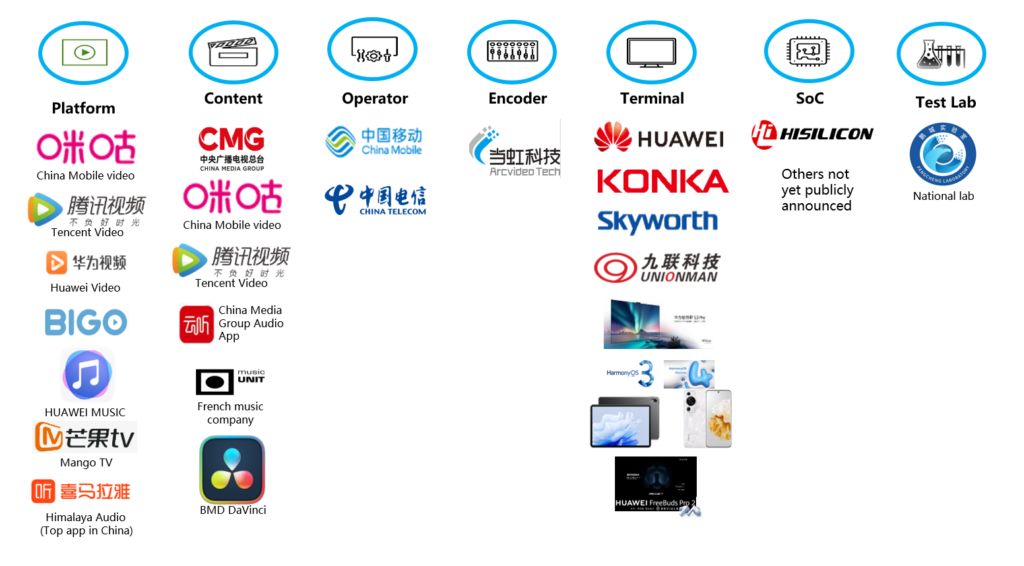
AVS3-P3 immersive audio added to DVB’s codec solutions
The DVB Project has added the AVS3 Part 3 Immersive Audio (AVS3-P3) codec to its core specification for the use of video and audio coding in broadcast and broadband applications. The codec was developed by the Audio and Video Coding Standard Workgroup of China, which is also the source of the AVS3 video codec, added by DVB in 2022.
A new revision of the DVB-AVC specification was approved by last week’s meeting of the DVB Steering Board and is available now as DVB BlueBook A001r22.
The new audio codec brings the potential to further extend the market reach of DVB solutions, especially in Chinese markets, and brings its own features to deliver efficient NGA (Next Generation Audio).
The AVS3-P3 standard supports lossy and lossless audio coding and NGA audio encoding and decoding, as well as loudspeaker and binaural rendering for 3DoF presentation (three degrees of freedom, for virtual reality contexts where the user can look left and right as well as up and down).
The DVB profile of AVS3-P3 also allows support for channel-based, object-based and scene-based audio coding, along with multiple objects mixed multi-channel audio coding. The metadata schema defined in AVS3-P3 is compatible with the EBU’s Audio Definition Model (ADM, ITU-R BS.2076).

An article in the most recent edition of DVB Scene magazine (page 13) sets out the background to the development of AVS3-P3 and stresses that more than 20 vendors have joined the end-to-end value chain. With several successful trial transmissions having been run in preparation for full deployment, the AVS Workgroup of China was pleased to bring the standard to the DVB Project, where it was evaluated against the same commercial requirements that were used for other codecs included in DVB’s toolbox.
DVB BlueBook A001r22 will be forwarded to ETSI for standardization as TS 101 154 V2.9.1.
